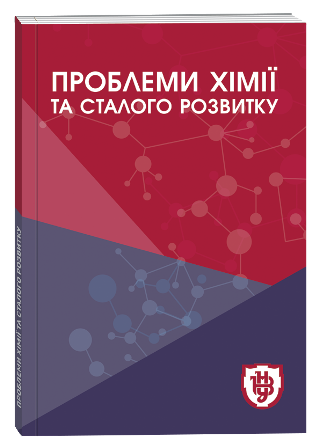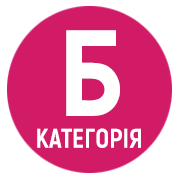MODELLING THE DYNAMICS OF AQUATIC AND COASTAL PLANT COMMUNITIES IN POST-MILITARY CONDITIONS
DOI:
https://doi.org/10.32782/pcsd-2023-2-7Keywords:
wetlands, ecological systems theory, military factors, synphytoindication, forecasting ecosystem changesAbstract
The activity of hostilities in the Russian-Ukrainian war has reached an unprecedented scale. It causes damage not only to the economy, people's lives and health, but also transforms the environment. Studying the type of these changes and their intensity is an important procedure for determining ecological risks and developing algorithms for the future restoration of natural ecosystems. During the study of the Shcherbynchyk river valley near the village of Moschun, we determined that the groups of aquatic microphytes belong to 9 associations united in 4 unions, 3 orders and 3 classes. The habitats formed by them are meso-eutrophic and eutrophic reservoirs and coasts. As a result of hostilities, chemical and physical factors created by them act on the river valley – short-term and prolonged, direct and indirect. Short-term factors are thermal and mechanical effects, including hydroacoustic and vibration, during ammunition explosions. Physico-chemical factors act for a longer time. The associations Lemnetum minoris, Lemno-Salvinietum natantis, Potametum natantis, Numpharo lutei-Nymphaetum albae, Trapetum natansis, Phragmitetum australis, Typhetum angustifoliae are the most sensitive to changes in the level of acidity. The least sensitive will be the Glycerietum maximae and Iridetum pseudacori associations. The indirect effects of hostilities can be divided into three main groups: siltation, eutrophication, and accumulation of plant-available nitrogen. A decrease in the value of the long-term wetting regime leads to a gradual transition to eutrophic swamps and wet meadows. As a result of eutrophication, including due to the accumulation of available nitrogen, aquatic macrophyte communities are degraded. In the coastal part, the combination of nitrification with an increase in the level of anthropogenic transformation causes the formation of ruderal coenoses of the Bidentetea tripartiti class.
References
Agency for Toxic Substances and Disease Registry (ATSDR) (2006). White Phosphorus: Health Effects. Toxicological Profile Information Sheet.
Alpatova, O., Maksymenko, I., Patseva, I., Khomiak, I., Gandziura, V. (2022). Hydrochemical state of the postmilitary operations water ecosystems of the Moschun, Kyiv region. XVI International Scientific Conference “Monitoring of Geological Processes and Ecological Condition of the Environment” 15–18 November 2022, Kyiv, Ukraine.
Arthington, Angela H. (2012). Wetlands, Threats, and Water Requirements, Environmental Flows, University of California Press, (pp. 243–258).
Atiyeh, B.S., Gunn, S.W., Hayek, S.N. (31 December 2007). Military and Civilian Burn Injuries During Armed Conflicts. Annals of Burns and Fire Disasters. 20 (4), 203–215.
Boiko, V. S., Boiko, R. V.(2004). Explanatory and terminological dictionary-reference book on oil and gas.
Davidson, N.C. (2014). How much wetland has the world lost? Long-term and recent trends in global wetland area. Marine and Freshwater Research, 65 (10), 934–941.
Dobrochaeva, D.N., Kotov, M.N., Gorokudin, Yu.N. (1987). Determinant of higher plants of Ukraine.
Didukh, Ya.P. (2005). Theoretical approaches to creating a classification of ecosystems. Ukr. Phytocene collection, Ser. S, 23, 3–15.
Didukh, Y. P. (2012). Fundamentals of Bioindication. Kyiv: Naukova dumka Publ.
Dubyna, D. V. (2006). Higher aquatic vegetation. Lemnetea, Potametea, Ruppietea, Zosteretea, Isoëto-Littorelletea (Eleocharition acicularis, Isoetion lacustris, Potamion graminei, Sphagno-Utricularion), Phragmito-Magnocaricetea (Glycerio-Sparganion, Oenanthion aquaticae, Phragmition communis, Scirpion maritimi). Resp. ed. Yu. R. Shelyag-Sosonko. Vegetation of Ukraine.
Dubyna, D.V., Dzyuba, T.P., Yemelyanova, S.M., and others. (2019). Prodromus vegetation of Ukraine.
Hennekens S. (2009). Turboveg for Windows. 1998–2007. Version 2. Wageningen: Inst. voor Bos en Natuur.
Khomiak, I., Harbar, O., Demchuk, N., Kotsiuba, I., Onyshchuk, I. (2019). Above-graund phytomas dynamics in autogenic succession of an ecosystem. Forestry ideas, 1 (57), 136–146.
Keddy, P.A. (2010). Wetland Ecology Principles and Conservation; Cambridge University Press: Cambridge, IK, USA, 1–497.
Khomiak, I.V. (2013). Phytoindicative analysis of transformation processes of wetlands. Protected business in Ukraine,1, (19), 38–42.
Khomiak, I.V., Kozin, M.S., Kotsyuba, I.Yu., Vasylenko. O.M., Vlasenko. R.P. (2022). Justification of the need to protect the sources of small rivers on the example of the Slovechansko-Ovrutsky Ridge. Environmental sciences, 1 (40), 28–32.
Khomiak, I.V., Zarichna, M.S., Demchuk, N.S., Kostyuk, V.S., Vasylenko, O.M., Vlasenko, R.P., Garbar, D.A. (2021). The influence of flow regulation on the dynamics of ecosystems of the Lisna river (Zhytomyr Region) Ecological Sciences, 2(35), 45–48.
Mosyakin, S.L., Fedoronchuk, M.M. (1999). Vascular plants of Ukraine. A nomenclatural checklist.
Palamarchuk, M.M., Zakorchevna, N.B. (2001). Water Fund of Ukraine. Reference manual.
Smith, M. J.; Schreiber, E. S. G., Kohout, M., Ough, K., Lennie, R., Turnbull, D., Jin, C., Clancy, T. (2007). Wetlands as landscape units: spatial patterns in salinity and water chemistry. Wetlands, Ecology & Management, 15 (2), 95–103.
Upadhyay A.K, Singh,R., Singh D. (2020). Restoration of Wetland Ecosystem: A Trajectory Towards a Sustainable Environment 1st ed. Springer.
I.G. Коtsiuba, G.V. Skyba, I.A. Skuratovskaya, S.M. Lyko. Ecological Monitoring of Small Water Systems: Algorithm, Software Package, the Results of Application to the Uzh River Basin (Ukraine). Methods and objects of chemical analysis, Volume 14, № 4, 2019. P. 200–207.
Iryna Kotsiuba, Vitalina Lukianova, Yevheniia Anpilova, Tetiana Yelnikova, Olena Herasymchuk, Oksana Spasichenko.The Features of Eutrophication Processes in the Water of the Uzh River. Ecological Engineering & Environmental Technology 2022, 23(2), 9–15.







